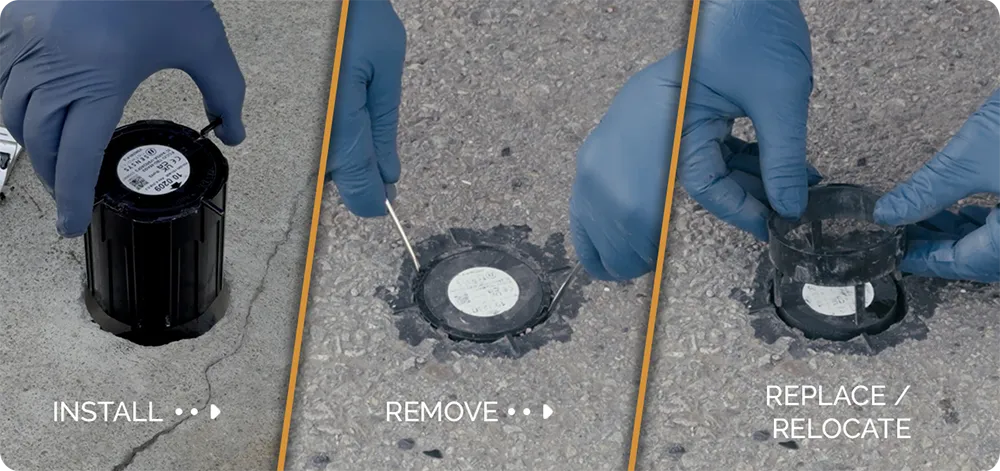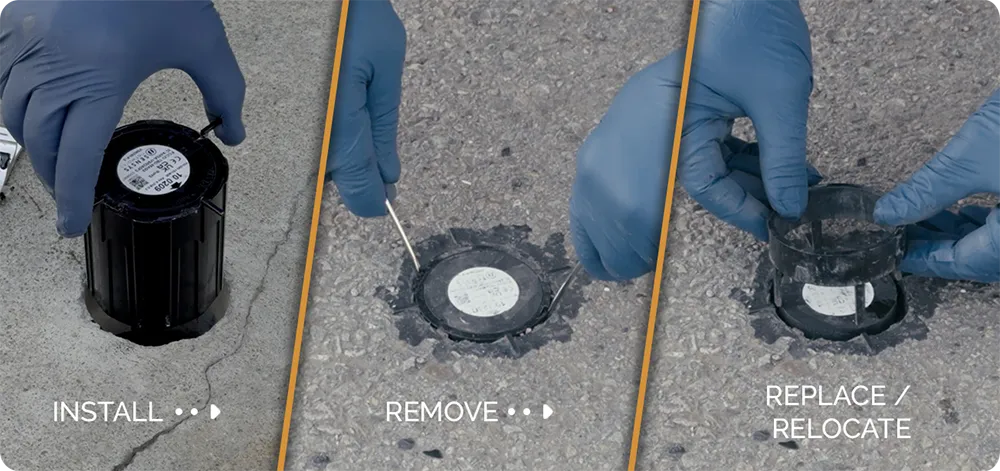The US City of Greenville has begun phasing in new vehicle detection technology at its traffic signals. The state-of-the-art traffic sensors are expected to provide numerous benefits to motorists including improved safety, cost savings, greater mobility and increased productivity. The city’s 115 vehicle-activated signalised intersections currently have more than 900 in-road sensors that detect the presence of vehicles. The loop detectors, which have been widely used throughout the US for more than four de
February 21, 2013
Read time: 3 mins
The US City of Greenville has begun phasing in new vehicle detection technology at its traffic signals. The state-of-the-art traffic sensors are expected to provide numerous benefits to motorists including improved safety, cost savings, greater mobility and increased productivity.
The city’s 115 vehicle-activated signalised intersections currently have more than 900 in-road sensors that detect the presence of vehicles. The loop detectors, which have been widely used throughout the US for more than four decades, need frequent maintenance and replacement; in Greenville, more than 50 loops fail or require replacement each year. Replacing a loop can take a day or more and requires temporary lane closures that lead to traffic delays and reduced safety for motorists and workers.
Under a new plan, the city’s public works department will consider replacing failed detection loops with148 Wavetronix SmartSensor technology provided by local intelligent transportation systems equipment vendor Transportation Equipment and Services. “We instantly recognised that the technological, safety and cost-saving advantages offered by Wavetronix could be an excellent fit for the City of Greenville’s progressive approach to transportation solutions,” says transportation equipment and services sales consultant Mark Holland.
“There are many reasons why loops fail,” says Greenville city traffic engineer Richard DiCesare. “Pavement can shift and affect the loops, especially on a downgrade. New construction on adjacent lots can easily take out the lead wire along with all the loops it connects. And every time you need to mill and resurface a road, the loops typically need to be replaced.”
Instead of loops buried in the pavement, the Wavetronix solution relies on a single radar-emitting unit mounted above each intersection approach that detects vehicles using sixteen separate radar beams to achieve a 90-degree, 140-foot field of view in all weather and lighting conditions.
The Wavetronix technology can typically be installed at a comparable cost to a loop detection system and provides numerous additional benefits, including: eliminating the need for lane closures during the installation and maintenance of traffic sensors; eliminating traffic delays resulting from the installation and maintenance of traffic sensors; reducing long-term maintenance costs for traffic sensors; prevents traffic delays resulting from the failure of traffic detection loops; adds detection capabilities for bicyclists using traffic lanes; adds data collection and traffic count capabilities at signalised intersections to enhance decision making and support requests for supplemental state and federal funding.
“Especially in these economic times, we’re always looking for ways to do things better and more cost-effectively, and Wavetronix makes that possible,” says DiCesare. “With Wavetronix SmartSensors we really are getting more for each taxpayer dollar by leveraging the additional safety, mobility, data-collection and time-saving benefits it provides. If the costs and benefits of this technology remain the same, the eventual goal will be phasing out loop detection in the City of Greenville in favour of the newer, more advanced technology.”
The city’s 115 vehicle-activated signalised intersections currently have more than 900 in-road sensors that detect the presence of vehicles. The loop detectors, which have been widely used throughout the US for more than four decades, need frequent maintenance and replacement; in Greenville, more than 50 loops fail or require replacement each year. Replacing a loop can take a day or more and requires temporary lane closures that lead to traffic delays and reduced safety for motorists and workers.
Under a new plan, the city’s public works department will consider replacing failed detection loops with
“There are many reasons why loops fail,” says Greenville city traffic engineer Richard DiCesare. “Pavement can shift and affect the loops, especially on a downgrade. New construction on adjacent lots can easily take out the lead wire along with all the loops it connects. And every time you need to mill and resurface a road, the loops typically need to be replaced.”
Instead of loops buried in the pavement, the Wavetronix solution relies on a single radar-emitting unit mounted above each intersection approach that detects vehicles using sixteen separate radar beams to achieve a 90-degree, 140-foot field of view in all weather and lighting conditions.
The Wavetronix technology can typically be installed at a comparable cost to a loop detection system and provides numerous additional benefits, including: eliminating the need for lane closures during the installation and maintenance of traffic sensors; eliminating traffic delays resulting from the installation and maintenance of traffic sensors; reducing long-term maintenance costs for traffic sensors; prevents traffic delays resulting from the failure of traffic detection loops; adds detection capabilities for bicyclists using traffic lanes; adds data collection and traffic count capabilities at signalised intersections to enhance decision making and support requests for supplemental state and federal funding.
“Especially in these economic times, we’re always looking for ways to do things better and more cost-effectively, and Wavetronix makes that possible,” says DiCesare. “With Wavetronix SmartSensors we really are getting more for each taxpayer dollar by leveraging the additional safety, mobility, data-collection and time-saving benefits it provides. If the costs and benefits of this technology remain the same, the eventual goal will be phasing out loop detection in the City of Greenville in favour of the newer, more advanced technology.”










